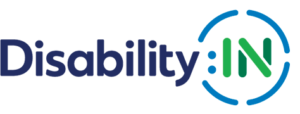
Region: Americas
Disability Definition
Under the Employment Equity Act, a person with a disability is “any person who has a long-term, reoccurring physical, mental, sensory, psychiatric, or learning impairment and who considers themselves to be disadvantaged in employment by reason of that impairment.” According to the Canadian Human Rights Act, a disability is “any previous or existing mental or physical disability and includes disfigurement and previous or existing dependence of alcohol or a drug.”
Legislation
The Canadian Charter of Rights and Freedoms is a part of the Canadian Constitution. Section 15 of the Charter makes it clear that every individual in Canada – regardless of race, religion, national or ethnic origin, colour, sex, age or physical or mental disability – is to be considered equal. Programs to improve employment opportunities for people with mental or physical disabilities may be protected under subsection 15(2).
The Canadian Human Rights Act of 1977 protects Canadians from discrimination when they are employed by or receive services from:
-Federal government
-First Nations governments
-Private companies that are regulated by the federal government like banks, trucking companies, broadcasters and telecommunications companies
The Employment Equity Act (S.C. 1995, c. 44) purpose is to achieve equality in the workplace so that no person shall be denied employment opportunities or benefits for reasons unrelated to ability and, in the fulfilment of that goal, to correct the conditions of disadvantage in employment experienced by women, Aboriginal peoples, persons with disabilities and members of visible minorities by giving effect to the principle that employment equity means more than treating persons in the same way but also requires special measures and the accommodation of differences.
Canada ratified the UN Convention on the Rights of Persons with Disabilities in 2010.
Employer Legal Requirements
According to the Employment Equity Act, every employer shall implement employment equity by “identifying and eliminating employment barriers against persons in designated groups that result from the employer’s employment systems, policies and practices that are not authorized by law; and instituting such positive policies and practices and making such reasonable accommodations as will ensure that persons in designated groups achieve a degree of representation in each occupational group in the employer’s workforce that reflects their representation in the Canadian workforce.”
For the purpose of implementing employment equity, every employer shall “collect information and conduct an analysis of the employer’s workforce, in order to determine the degree of the underrepresentation of persons in designated groups in each occupational group in that workforce; and conduct a review of the employer’s employment systems, policies and practices, in accordance with the regulations, in order to identify employment barriers against persons in designated groups that result from those systems, policies and practices.”
In Canada, organizations can choose to develop “special programs” to help historically disadvantaged groups improve their employment opportunities. Special programs that target certain candidates based on a diversity characteristic, and would otherwise infringe the Human Rights Code, are permissible if the program is intended to help people who experience discrimination, economic hardship or disadvantage to achieve equality.
Accessibility Requirements
The Accessible Canada Act was passed in June 2019. The purpose of this ACA is “to provide benefits to all persons, especially persons with disabilities, through a Canada without barriers. The realization of this, within the purview of matters coming within the legislative authority of Parliament, is to come on or before January 1, 2040. The ACA aims to achieve this by identifying and removing barriers, and preventing new barriers, in the following areas: employment, built environment, information and communication technologies, communications beyond information and communication technologies, procurement of goods & services, design and delivery of programs and services, and transportation.”
There are independent accessibility acts in many of the Cnadian provinces and territories, including Ontario, Manitoba, and Nova Scotia.In other Canadian provinces and territories, including Saskatchewan and Yukon, disability advocates are putting pressure on their own governments to pass accessibility legislation.
Cultural Norms
Variation by provincial region, including Quebec and Aboriginal populations, bring a variety of cultural differences to Canada. Ability may be overlooked or discounted, expectations lowered, and achievements disqualified. Knowing this, individuals whose disability can be hidden, like partial hearing loss or mental illness, have often gone to great lengths to be seen as “normal.” There are challenges when passing federal comprehensive civil rights legislation although there are public efforts to do so.
Reference: 08-disability-and-inclusion-and-accessibility-1025-en-pr.pdf (canada.ca)
Business Practices/Examples
Additional content coming soon.
Insights
In 2017, according to Statistics Canada, one in five (22%) Canadians age 15 and over had one or more disabilities. This represents about 6.2 million individuals.
Women (24%) were more likely to have a disability than men (20%).
Disabilities related to pain, flexibility, mobility, and mental health were the most common disability types.
Among youth (aged 15 to 24 years), however, mental health-related disabilities were the most prevalent type of disability (8%).
Among those aged 25 to 64 years, persons with disabilities (PwD) were less likely to be employed (59%) than those without disabilities (80%).
Among those with disabilities aged 25 to 64 years who were not employed and not currently in school, two in five (39%) had the potential to work. This represents nearly 645,000 individuals with disabilities.
Reference: Public Safety Canada – Accessibility Plan 2023-2026
Supplier Diversity
Certification is in place in for women-owned business enterprises (WeConnect Canada).
Talent Sourcing Resources
Canadian Council on Rehabilitation and Work (CCRW) is a Canada-wide network of organizations and individuals. They offer information, education, training and Internet- based services which support the employment of persons with disabilities.
Additional Resources
Autism Canada is an advocacy organization with a national perspective on the issues currently facing those with autism spectrum disorder, their families and other stakeholders. We work collaboratively to share expertise, build consensus and help inform public policy and research. In addition to encouraging the sharing of best practices across provincial and territorial boundaries, Autism Canada actively promotes national dialogue on the most effective strategies for building equitable access to funding and services.
Barrier Free Canada is a comprehensive, non-partisan website with information on disability and accessibility legislation and partners.
Canadian Disability Policy Alliance is a national collaboration of disability researchers, advocates, and policy-makers, aimed at creating and mobilizing knowledge to enhance disability policy in Canada.
Council of Canadians with Disabilities’ work in the area of Human Rights and Equality Rights apprises judges, law-makers and other decision-makers about how disability must be taken into consideration in all areas of community life, thus ensuring Canadians with disabilities have full enjoyment of their human and equality rights.
Federal Disability Reference Guide is a tool for identifying, clarifying and promoting policies to address issues that affect people with disabilities. While the objective of the Guide is to help ensure that federal programs, policies and services maintain or enhance the social and economic inclusion of people with disabilities, much of the Guide’s content may be of use to other governments, organizations or institutions.
References
Canadian Human Rights Commission 2018 Annual Report Shows Little Improvement for Disabled Canadians
